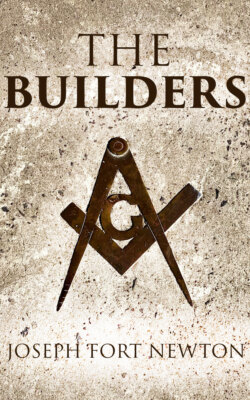Читать книгу The Builders - Joseph Fort Newton - Страница 16
На сайте Литреса книга снята с продажи.
II
ОглавлениеSuch, in brief, was the ancient allegory of eternal life, upon which there were many elaborations as the drama unfolded; but always, under whatever variation of local color, of national accent or emphasis, its central theme remained the same. Often perverted and abused, it was everywhere a dramatic expression of the great human aspiration for triumph over death and union with God, and the belief in the ultimate victory of Good over Evil. Not otherwise would this drama have held the hearts of men through long ages, and won the eulogiums of the most enlightened men of antiquity—of Pythagoras, Socrates, Plato, Euripides, Plutarch, Pindar, Isocrates, Epictetus, and Marcus Aurelius. Writing to his wife after the loss of their little girl, Plutarch commends to her the hope set forth in the mystic rites and symbols of this drama, as, elsewhere, he testifies that it kept him "as far from superstition as from atheism," and helped him to approach the truth. For deeper minds this drama had a double meaning, teaching not only immortality after death, but the awakening of man upon earth from animalism to a life of purity, justice, and honor. How nobly this practical aspect was taught, and with what fineness of spiritual insight, may be seen in Secret Sermon on the Mountain in the Hermetic lore of Greece:42
What may I say, my son? I can but tell thee this. Whenever I see within myself the Simple Vision brought to birth out of God's mercy, I have passed through myself into a Body that can never die. Then I am not what I was before.... They who are thus born are children of a Divine race. This race, my son, is never taught; but when He willeth it, its memory is restored by God. It is the "Way of Birth in God." ... Withdraw into thyself and it will come. Will, and it comes to pass.
Isis herself is said to have established the first temple of the Mysteries, the oldest being those practiced at Memphis. Of these there were two orders, the Lesser to which the many were eligible, and which consisted of dialogue and ritual, with certain signs, tokens, grips, passwords; and the Greater, reserved for the few who approved themselves worthy of being entrusted with the highest secrets of science, philosophy, and religion. For these the candidate had to undergo trial, purification, danger, austere asceticism, and, at last, regeneration through dramatic death amid rejoicing. Such as endured the ordeal with valor were then taught, orally and by symbol, the highest wisdom to which man had attained, including geometry, astronomy, the fine arts, the laws of nature, as well as the truths of faith. Awful oaths of secrecy were exacted, and Plutarch describes a man kneeling, his hands bound, a cord round his body, and a knife at his throat—death being the penalty of violating the obligation. Even then, Pythagoras had to wait almost twenty years to learn the hidden wisdom of Egypt, so cautious were they of candidates, especially of foreigners. But he made noble use of it when, later, he founded a secret order of his own at Crotona, in Greece, in which, among other things, he taught geometry, using numbers as symbols of spiritual truth.43
From Egypt the Mysteries passed with little change to Asia Minor, Greece, and Rome, the names of local gods being substituted for those of Osiris and Isis. The Grecian or Eleusinian Mysteries, established 1800 B.C., represented Demeter and Persephone, and depicted the death of Dionysius with stately ritual which led the neophyte from death into life and immortality. They taught the unity of God, the immutable necessity of morality, and a life after death, investing initiates with signs and passwords by which they could know each other in the dark as well as in the light. The Mithraic or Persian Mysteries celebrated the eclipse of the Sun-god, using the signs of the zodiac, the processions of the seasons, the death of nature, and the birth of spring. The Adoniac or Syrian cults were similar, Adonis being killed, but revived to point to life through death. In the Cabirie Mysteries on the island of Samothrace, Atys the Sun was killed by his brothers the Seasons, and at the vernal equinox was restored to life. So, also, the Druids, as far north as England, taught of one God the tragedy of winter and summer, and conducted the initiate through the valley of death to life everlasting.44
Shortly before the Christian era, when faith was failing and the world seemed reeling to its ruin, there was a great revival of the Mystery-religions. Imperial edict was powerless to stay it, much less stop it. From Egypt, from the far East, they came rushing in like a tide, Isis "of the myriad names" vieing with Mithra, the patron saint of the soldier, for the homage of the multitude. If we ask the secret reason for this influx of mysticism, no single answer can be given to the question. What influence the reigning mystery-cults had upon the new, uprising Christianity is also hard to know, and the issue is still in debate. That they did influence the early Church is evident from the writings of the Fathers, and some go so far as to say that the Mysteries died at last only to live again in the ritual of the Church. St. Paul in his missionary journeys came in contact with the Mysteries, and even makes use of some of their technical terms in his epistles;45 but he condemned them on the ground that what they sought to teach in drama can be known only by spiritual experience—a sound insight, though surely drama may assist to that experience, else public worship might also come under ban.
